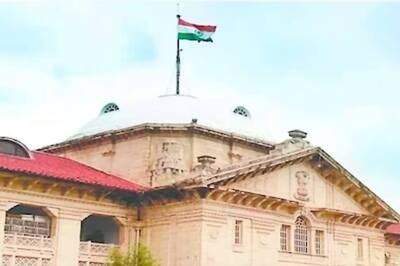Bloodbath, Shootouts, Bitter Rivalries: Why Delhi Gangsters are on a Killing Spree Never Seen Before

views
New Delhi: In the last one week, national capital has witnessed one gang-war and four shootouts. While gang-wars are not a new phenomenon in Delhi, the frequent shootouts speak volumes about the current law and order situation here. It is also concerning that illegal weapons are easily available to the locals and the small-time criminals.
Gangs and Their Rivalry
Virender Mann, a 44-year-old BSP candidate, was shot dead in outer Delhi’s Narela area on September 8 as a result of a gang-war. On the same day, three people were shot at by four suspects in Nihal Vihar area. Two days prior to that, a 26-year-old was shot dead in a personal rivalry in northeast Delhi. On September 12, again, two bike-borne men belonging to a gang fired five rounds in the air in northeast Delhi. A day after that, another man was shot dead in northeast Delhi’s Bhajanpura area.
The five suspects in the Narela murder case fired 30 bullets, of which 15 hit Virender who died on the spot. These suspects belong to a gang run by Jitender Gogi, currently the biggest gangster in the capital. He absconded from the police custody in July 2016 and since then he has been evading the police. “Gogi is not using any electronic device and therefore, it has become difficult to trace him,” said a senior police officer privy to investigation.
Police have failed to arrest a single accused in the Narela murder case. The investigation so far has revealed that Gogi demanded Rs 50 lakh as protection money from a local MLA, who was closely associated with Virender. The deceased was negotiating on behalf of the MLA which might have irked Gogi and his associates. Virender had 14 criminal cases registered against him.
Virender had helped criminal Pravesh Mann get bail in the murder of one Bablu Ganja. Pravesh is gangster Neeraj Bawana’s associate. Since Bawana and Pravesh are on the same side, anyone helping them or associated with them becomes Gogi’s rival or target. Gogi initially had rivalry with just Tillu, head of another gang. When Tillu went inside jail, he met Bawana and they became associates. That is why, Gogi is now targeting people not just associated with Tillu but Neeraj Bawana gang as well.
These gangs follow the rule – enemy’s enemy is a friend. Gogi, hence, became friends with another gangster, Ashok Pradhan, who absconded in a police encounter and has a reward of one lakh rupees on him. Ashok is Bawana’s rival. Because Bawana has joined hands with Tillu in the jail, Pradhan has become friends with Gogi, Tillu’s rival.
The Extortion Racket
Three days ago, Delhi’s Nand Nagri echoed with the sound of firing at night. A mobile dealer received an extortion call of Rs 50 lakh from the active members of the Anil Dujana gang. A few minutes later, two gang members came to the dealer’s shop and fired five rounds in the air in order to create a sense of fear. While the police initially refused involvement of any gang, later when the accused got arrested they accepted the involvement of Anil Dujana gang. The duo told police that they met Anil Dujana on September 12 at Surajpur during his court hearing where he gave them the contact details and name of the person from whom money was to be extorted. They both have been associated with Dujana gang for the last five years. One of the accused has at least 13 criminal cases against him.
Supremacy in the area
Salman, 26, was shot dead by two unidentified men in Delhi’s Seelampur area a week back. The man was standing outside his house when two bike-borne men approached him. They got into an altercation with the victim, shot at him and fled the spot. This is a case of establishing supremacy in the area. According to sources, Salman had gone to another lane and was spotted by the two bike-borne men. Later in the evening, they came to warn him not enter their lane which was objected to by Salman.
Shootouts over Trivial Issues
On the same day when Seelampur shootout took place, east Delhi’s Geeta Colony also witnessed a similar incident. Three street vendors received bullet injuries after a scuffle broke between two men over a trivial issue. According to police, the scuffle broke over the rent of a battery. Mohd Zubair, one of the vendors who rents out batteries, met Mufees, another local vendor. Zubair asked Mufees to return the battery but the latter refused, claiming it belonged to someone else. Zubair, who was accompanied by three others, took out a pistol and started indiscriminate firing due to which three people sustained injuries.
Easy Availability of Weapons
Four shootouts in a span of seven days in not usual in the national capital. In fact, the incidents of shootouts have increased and so have the criminal activities. One factor continues to be part of all the shootouts and gang-wars—the weapons involved.
Be it gang members or street vendors, the easy availability of weapons is alarming. Even the police have admitted that the increase in shootout cases is due to the easy access to weapons even by small-time criminals. In both the Geeta Colony incident and Seelampur incident, the pistol was locally made. Such pistols are cheap and therefore the budding criminals often possess them.
Weapons From UP and MP
Earlier, most weapons came from Bihar’s Munger. But due to extreme checking at various routes, the ‘Mungeri katta’, as these pistols are locally known, has been replaced. According to a police sources, now raw material is brought from Munger and guns and pistols are manufactured in Uttar Pradesh’s Meerut.
The weapons used by criminals in NCR come mostly from Madhya Pradesh and UP’s Meerut, Ghaziabad and Muzaffarnagar. The locally made weapons are either semiautomatic or single-shot (non-semiautomatic). They are available at a price of Rs15,000 to 20,000. The single-shot is cheaper and available for as less as Rs 3,000. The high-end weapons or the improvised weapons are mostly smuggled from Nepal and Bangladesh. They are also called sophisticated weapons and are mostly brought from outside. They cost anywhere between Rs 2 lakh and 3 lakh.
Chain and Charm of Weapons
According to police, Some families in Delhi, which otherwise have a good reputation, behind the doors deal in weapon supply. One such name is that of Salim Pistol. A resident of Jaffrabad in Delhi, Salim used to purchase pistols for Rs 40,000 per piece from a contact in Nepal and sold them each for Rs 1 lakh. The cost of live rounds is about Rs 250. Salim’s primary customers in Delhi are gangsters such as Jitender Gogi, Hasheem Baba, Sonu Daryapur and Neeraj Bawana. He also replaced and repaired the guns until his arrest last year by the northeast Delhi police.
The cost of manufacturing a local weapon is Rs 3000 and it is sold somewhere between Rs20,000 and 25,000. Even when these weapon dealers are arrested, they know they will get bail within a month, police said. They return to their illegal business while appearing in court. “The money in this business is so high that they never think of starting any other business. We have dealers who have been arrested twice or thrice and still continue with this business,” said a senior police officer.
Suggesting how the shootouts can be curbed, a Delhi Police Special Cell officer said, “Criminals on parole need to be tracked. Apart from that, MCOCA kind of stringent act should be imposed on weapon dealers as well so that they don’t get back into the business again. Right now, even they know they will be out of jail very easily. Therefore, there is no deterrence.”




















Comments
0 comment